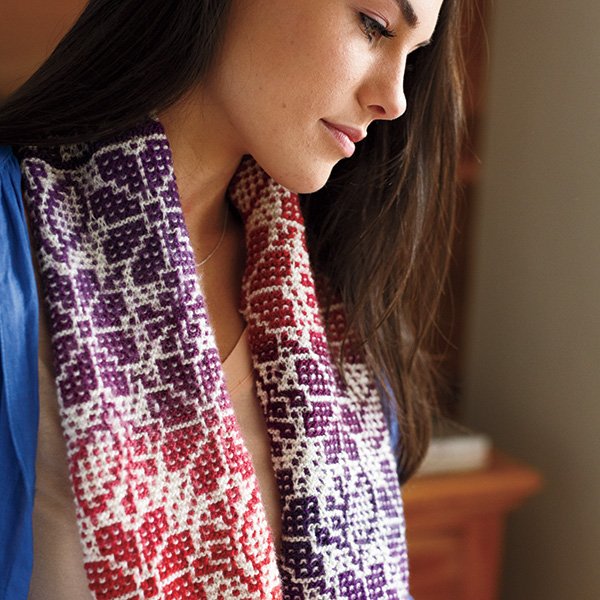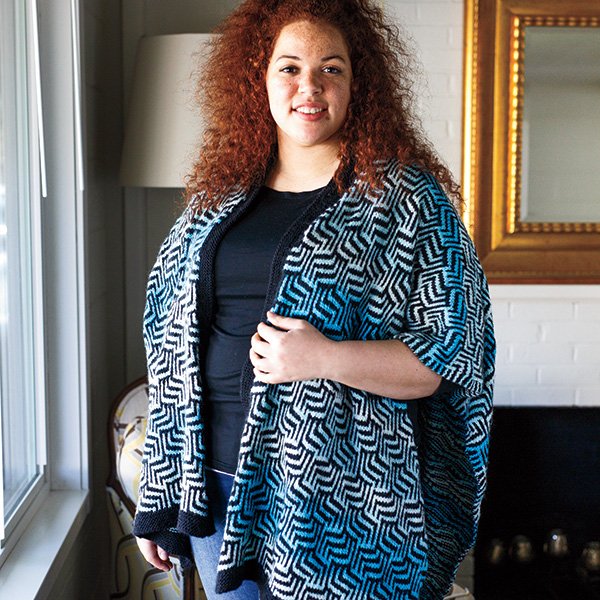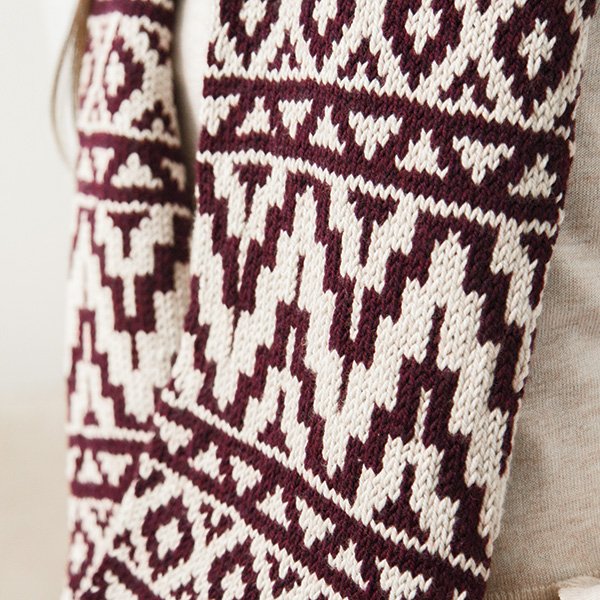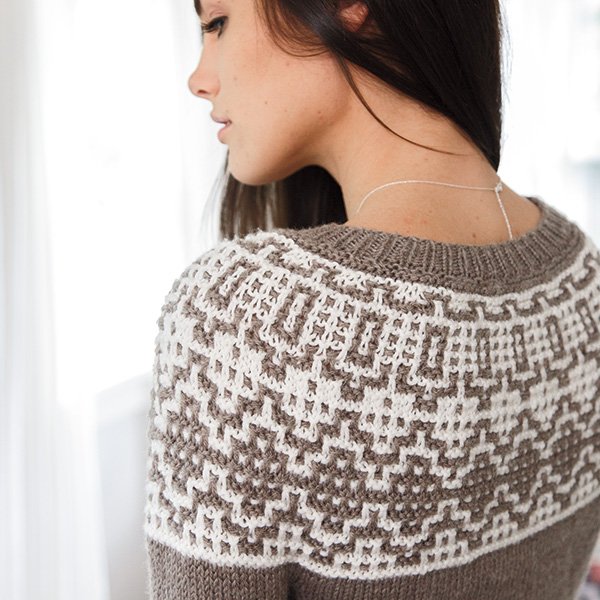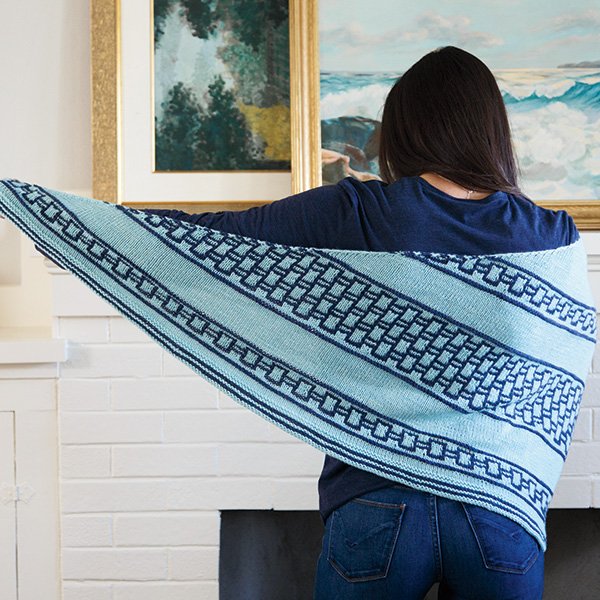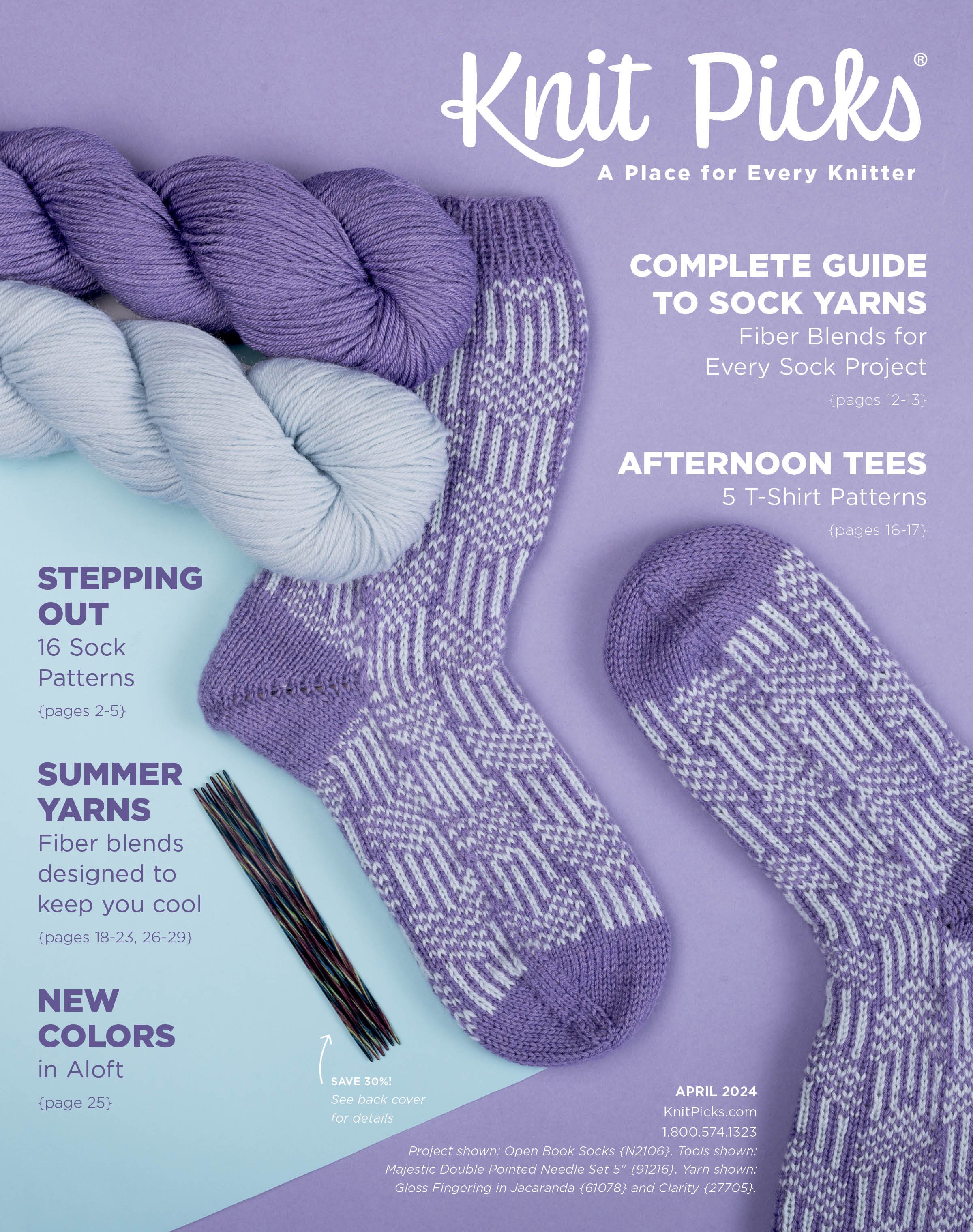If you've never tried mosaic knitting, let us tell you something about it: IT'S SO FUN! It's a way to create a colorwork pattern while only holding one yarn at a time, just knitting/purling and slipping stitches. Really, that's it.
It's also possible to use mosaic in combination with other techniques, like cables, but usually it really is just knits and slips, and sometimes purls.
It might feel overly formal to call mosaic knitting a "technique" because it really is just using slipped stitches along with more than one yarn color. So there's not really anything to "learn"—if you can knit/purl and follow a chart, you can just jump right in! But let's break it down. First, let's talk about slipped stitches.
How to Slip Stitches
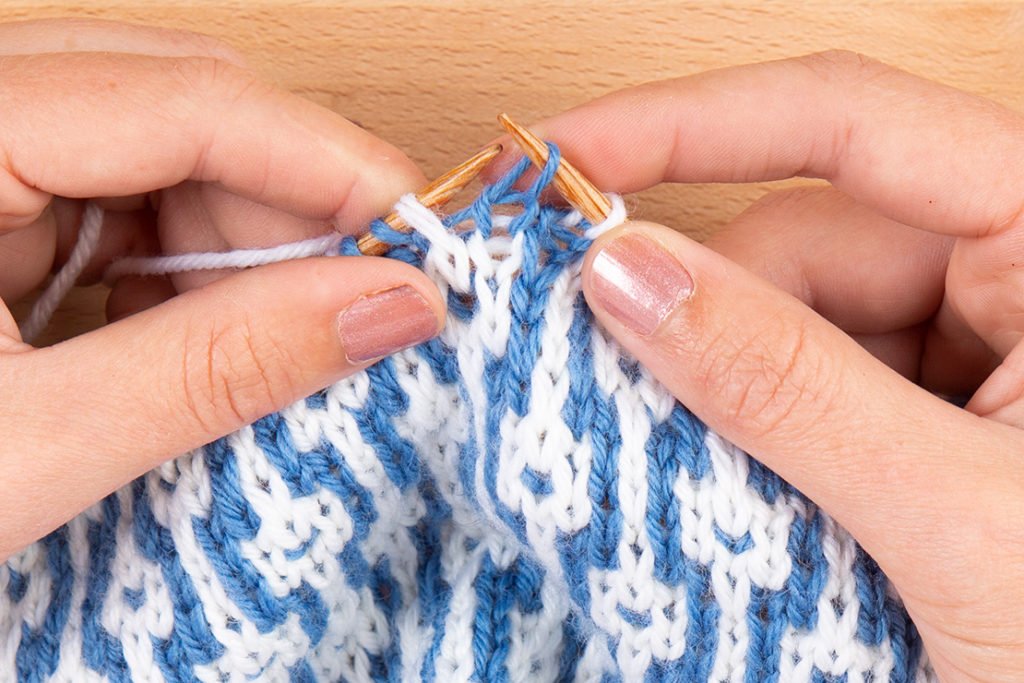
Slipping a stitch means passing it from one needle onto the other needle without working it (usually from the left-hand needle to the right-hand needle, unless you knit left-handed, then flip it). "Working" the stitch means knitting or purling it; so when slipping a stitch, you won't knit or purl it, just move it across onto the working needle.

Unless a pattern says otherwise, all slipped stitches are worked purl-wise, as you see here. Insert the needle into the stitch as if you were going to purl. This means the stitch is not being twisted as it passes from one needle to the other. See below how the position of the stitch stays the same, with the front leg going to the right:
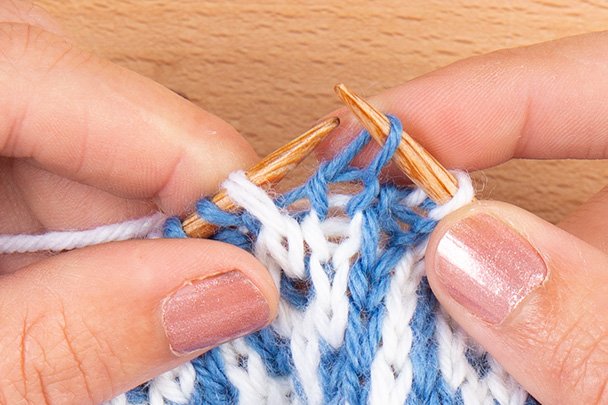
Also, unless the pattern notes otherwise, the yarn will always be held to the wrong side of the knitting when slipping a stitch. So, when you are working a right side row (or round), the yarn is held to the back; if you are working a wrong side row, the yarn is held to the front. This way the yarn is always going across the back side of the knitting, just like in stranded colorwork.
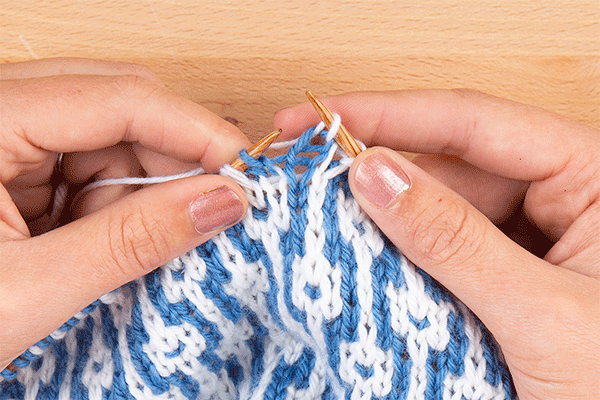
Here is a little animation of that slip being worked.
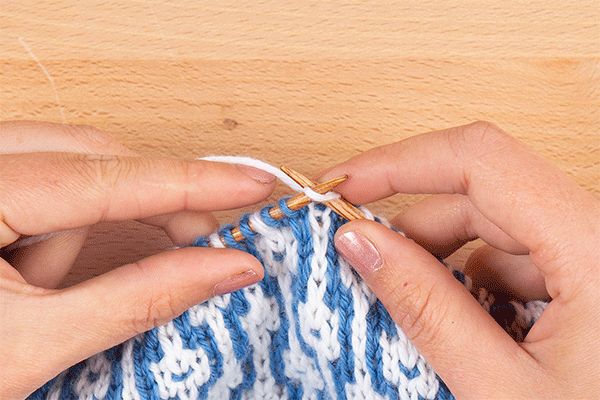
And here is that same slip in the context of the stitches around it; in this case, you'll see 2 stitches knit, then 1 stitch slipped, then the fourth stitch knit.
This is how mosaic patterns work: switching back and forth between knits (or sometimes purls) and slips to create the colorwork pattern, with the stitches meant to be in the held yarn color worked, and the stitches meant to be in the other color slipped.
Mosaic Charts

A mosaic chart will look something like this.
Similar to a colorwork chart, with the two (or sometimes more) colors, but with slips on all stitches of the color not currently being used. Most commonly, like with this pattern, you'll be working two rows (or rounds) in one color, followed by two rows of the other color, throughout. In this chart, the numbers on the right are colored with the yarn being held on that row.
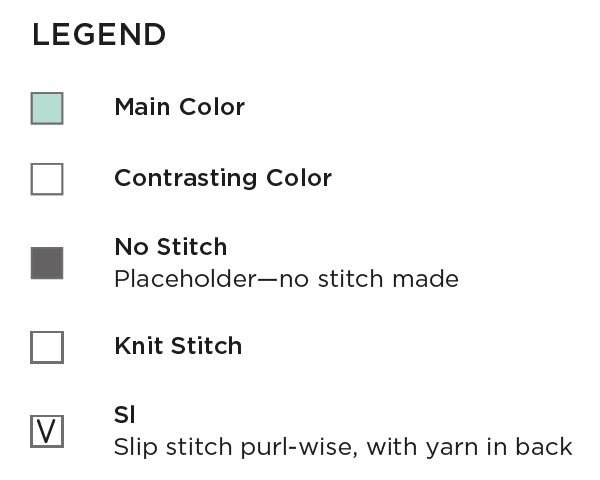
Usually, mosaic patterns will be charted, not written out, because they are so visual (similar to stranded colorwork patterns). There could be other symbols in a chart (like decreases for the crown) but usually knit/purl/slip stitches will be the main three types of stitches, often only knits and slips.
Tips and Tricks
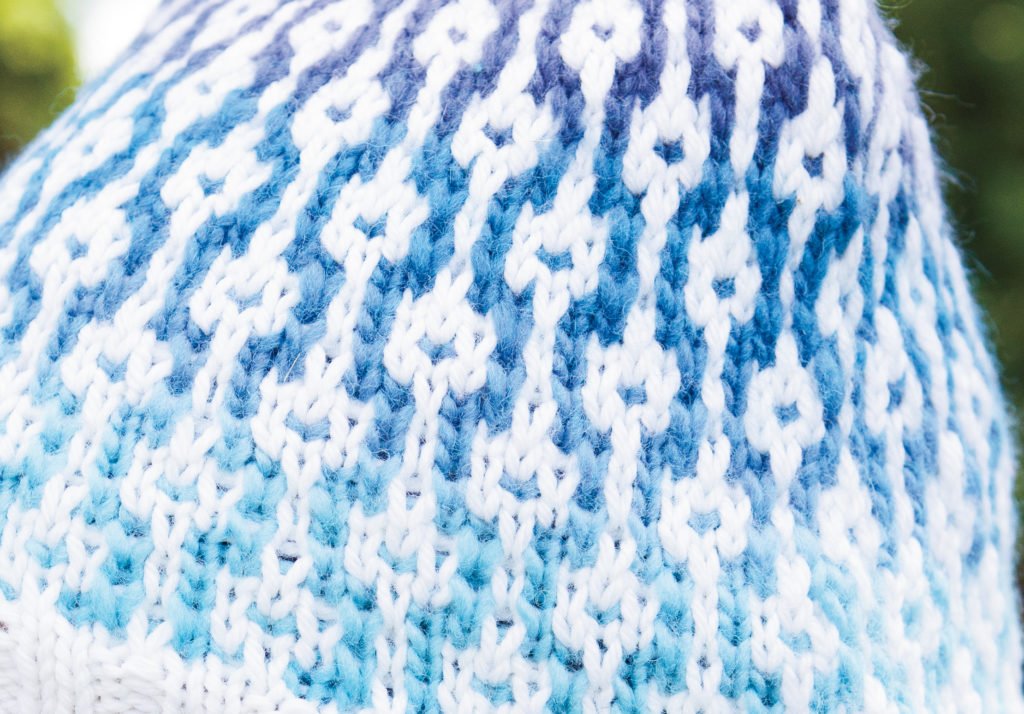
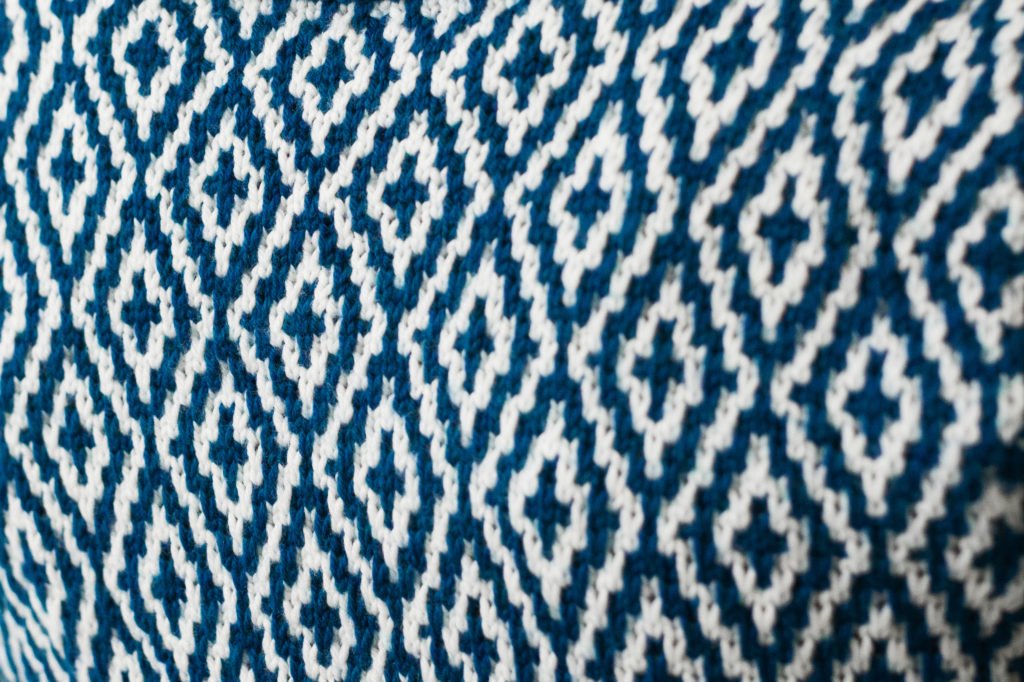
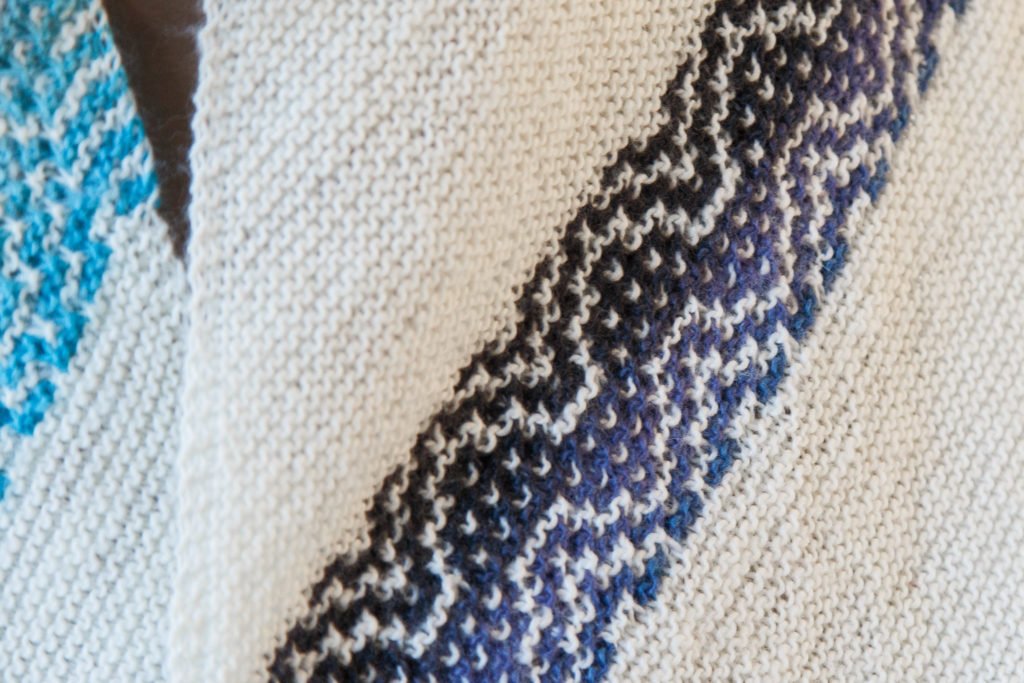
Something worth noting: mosaic patterns will usually have you slipping the same stitch for more than one row. This is fine! Many mosaic patterns (like the one in the Links hat) repeat the same row twice to create the pattern, as you can see in the chart excerpt above. So each slipped stitch will always be slipped twice before being worked. Since this is also happening to the other stitches around it, this all evens out and lays flat (if you were doing a column of mosaic knitting, surrounded by plain stockinette stitch, this wouldn't be so simple).

Because of the slips, the row gauge of mosaic patterns will be much denser than standard knitting; when knitting mosaic, you are basically knitting twice as many rows as you are actually creating. If one stitch is knit on one row, then slipped on the following row, two rows have been worked, but only one row has actually been created on that stitch. Make sense? It's not important to really understand this, if you're following a pattern, but if you're wondering why it seems like this project is taking longer than it should—that's why!

But don't worry, mosaic is so much fun to knit, and the rhythm of the slip/knit makes the rows speed by! We hope you'll give it a try and you'll be hooked, just like we are.

Mosaic Knitting Projects
All these beautiful designs were created with mosaic knitting. These are all from our collection Mosaic Medley.




